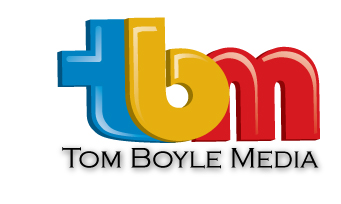Never Before Seen Offbeat Mixed Media Tee Shirts
 Because our first vendor has “Standards” (or is prudish), there are several tee shirts that we haven’t been able to offer you. Reasons for not accepting our designs ranged from too controversial to too cliché. Ironically, you could purchase the Seismic City tee shirt “Censorship is kinky” while these were censored, and “Forbidden” by Tavius.org has not been forbidden!
Because our first vendor has “Standards” (or is prudish), there are several tee shirts that we haven’t been able to offer you. Reasons for not accepting our designs ranged from too controversial to too cliché. Ironically, you could purchase the Seismic City tee shirt “Censorship is kinky” while these were censored, and “Forbidden” by Tavius.org has not been forbidden!
The good news is, thanks to a non-exclusivity clause, we have found a Silkscreen / Direct to Garment printer without so many qualms. So without further ado, we now offer the following shirts for sale at http://offbeatmixedmedia.com!
Villa for Vendetta by Project Pending
T his design has been in the hot seat due to the civic unrest in Mexico following the abduction and murder of so many students and others. Part of the proceeds will be donated to Raúl Isidro Burgos Rural Teachers’ College of Ayotzinapa in Iguala, Mexico, so it can’t be all bad!
his design has been in the hot seat due to the civic unrest in Mexico following the abduction and murder of so many students and others. Part of the proceeds will be donated to Raúl Isidro Burgos Rural Teachers’ College of Ayotzinapa in Iguala, Mexico, so it can’t be all bad!
Four Medical Porpoises by Project Pending
 This four part series from Project Pending was banned not because of the pun (though still illegal in China, surely), but because of the mostly subtle references to marijuana.
This four part series from Project Pending was banned not because of the pun (though still illegal in China, surely), but because of the mostly subtle references to marijuana.
Four Industrial Porpoises by Project Pending
 In certain ways, the pot references are educational combined with the images. Here the porpoises represent various industries that work with cannabis, from Farmers to Lab Technicians, Hazard Waste Disposal to Construction.
In certain ways, the pot references are educational combined with the images. Here the porpoises represent various industries that work with cannabis, from Farmers to Lab Technicians, Hazard Waste Disposal to Construction.
Four Legal Porpoises by Project Pending
 The Legal Porpoises are a (prescient) nod to the recent legalization for recreational use in places like Colorado, Oregon, and Washington.
The Legal Porpoises are a (prescient) nod to the recent legalization for recreational use in places like Colorado, Oregon, and Washington.
Four Religious Porpoises by Project Pending
 These four Porpoises represent religious sects that utilize the effects of THC in their spiritual rituals. Can you name all four?
These four Porpoises represent religious sects that utilize the effects of THC in their spiritual rituals. Can you name all four?
Einstein Raspberry by Tavius.org
 Einstein was rejected because it “too closely resembled an existing design,” which is funny as it was illustrated by Tom Boyle, our in-house designer (Tom Boyle Media), from a photograph for Tavius.org. It looked too familiar because it was the same image posted to http://tavius.org!
Einstein was rejected because it “too closely resembled an existing design,” which is funny as it was illustrated by Tom Boyle, our in-house designer (Tom Boyle Media), from a photograph for Tavius.org. It looked too familiar because it was the same image posted to http://tavius.org!
Sharing is Caring by Tavius.org
This design has been kept from the world because of its re-conceptualization of an old cartoon character. Meanwhile, the world is covered in Pop Cultural references on Tee Shirts, from combining Blues Clues with Dr. Who by Moyshe Designs to distorted Disney characters (and we all know how litigious they can be!) like Mutant Mouse no02 by Thiago Garcia.
Support the Arts Trilogy by Seismic City
This trilogy was rejected due to the popularity of Charlie Manson and Adolf Hitler in the Tee Shirt Industry. Sure they’re cliché, but we think the Support the Arts twist gives it enough to warrant joining the cadre of other Manson / Hitler shirts. Besides, the vendor has several Che Guevara themed designs, including our favorite “CliChé” by Snazzygaz.
Failed Musician: Charles Manson
Failed Artist: Adolf Hitler
Failed Carpenter: Jesus Christ (with Project Pending)
Zombie like by Seismic City
 This one failed due to the icon’s resemblance to a social media icon – though considerably altered into a severed arm. Too scary!
This one failed due to the icon’s resemblance to a social media icon – though considerably altered into a severed arm. Too scary!
Beatles Crossing by Seismic City
 This image was banned citing possible legal issues from the band, which again begs the question of why other available shirts like Zimmy Stardust by Frank Malec were accepted.
This image was banned citing possible legal issues from the band, which again begs the question of why other available shirts like Zimmy Stardust by Frank Malec were accepted.
Keeping Our Children Safe From Cigarettes… by Seismic City
Of co urse a Tee Shirt about Cigarettes would be banned in California, where we, and our vendors, operate! But smokers wear Tee Shirts too.
urse a Tee Shirt about Cigarettes would be banned in California, where we, and our vendors, operate! But smokers wear Tee Shirts too.
I’m kinda Kinky, but I’m not THAT kinda Kinky… by Seismic City
 This one wasn’t up to snuff, perhaps because of it’s similarity to “Censorship is Kinky” (Seismic City), CRAZY! Don’t Mess with Crazy!” (Tavius.org), and it’s sister shirt “I’m kinda Crazy, but I’m not THAT kinda Crazy!” (Seismic City). Consider them a series.
This one wasn’t up to snuff, perhaps because of it’s similarity to “Censorship is Kinky” (Seismic City), CRAZY! Don’t Mess with Crazy!” (Tavius.org), and it’s sister shirt “I’m kinda Crazy, but I’m not THAT kinda Crazy!” (Seismic City). Consider them a series.
Tanks, Sweats, and Hoodies
Tank Tops, Sweat Shirts and Fleece Hoodies are available with Offbeat designs on them, and more products will be added ad infinitum. And not just clothing! We will be adding mugs, tote bags, canvas art prints, cell phone covers, books and so much more as we continue our quest for World Domination! Look out!
Fan Appreciation Sale!
We are offering a 20% Fan Appreciation Discount for the month of January for those of you who Follow, Like, Pin, Favorite, and in general dig us on all of our internet presence. Use Discount Code: OMM2015j12-31
Check us out (and Follow, Like, etc.) at these sites:





























